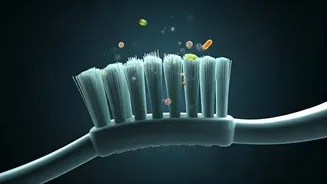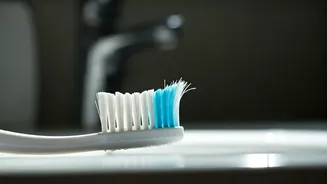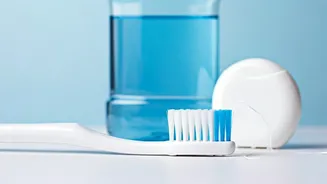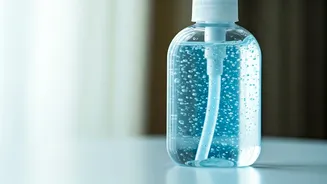Microbial Menace Unveiled
Your toothbrush, a staple in your daily routine, might be harboring more than just toothpaste residue. Research indicates that toothbrushes can become
contaminated with a variety of microbes, including bacteria, viruses, and fungi. These microorganisms can originate from your mouth, the surrounding environment, and even the toilet if the brush is stored nearby. The moist environment and the bristles provide an ideal breeding ground for these unseen guests. This accumulation of microbes could potentially lead to oral health problems, such as gum disease, and in some cases, contribute to systemic infections. Understanding the types of microbes and how they can affect your health is the first step toward better oral hygiene practices. It is important to know that these risks are preventable and manageable with the right knowledge and habits.
The Dirty Details
The microbes found on toothbrushes are incredibly diverse. Common culprits include bacteria from the mouth, such as Streptococcus mutans, which contributes to tooth decay, and various species of bacteria associated with gum disease. Additionally, viruses like herpes simplex virus (HSV) can also contaminate the bristles. Studies have shown that toothbrushes can also harbor fungi, like Candida albicans, a common cause of oral thrush. Even the bathroom environment plays a role, with airborne particles containing microbes settling on the brush. The potential presence of these pathogens highlights the importance of proper toothbrush care and replacement. This is especially true for individuals with weakened immune systems or underlying health conditions, who are at increased risk of infection from these microbes. Regular attention to toothbrush hygiene is essential for everyone.
Risks to Health
The presence of microbes on your toothbrush raises several health concerns. Firstly, these microorganisms can contribute to oral health issues, such as gum inflammation and infections. Secondly, they can pose a risk of re-infection if you are recovering from a cold or flu. Furthermore, the microbes can potentially lead to more serious systemic infections, particularly for individuals with compromised immune systems. For example, bacteria from the mouth can enter the bloodstream through cuts or sores in the gums, leading to bacteremia or even sepsis. Although the risk of serious health complications from toothbrush contamination is relatively low for healthy individuals, it is crucial to recognize the potential risks and take preventive measures. This includes practicing good oral hygiene and being mindful of how you store and care for your toothbrush.
Protect Your Brush
Several simple yet effective steps can minimize the risk of microbial contamination on your toothbrush. First and foremost, thoroughly rinse your toothbrush with tap water after each use to remove food particles and debris. Second, store your toothbrush upright in a holder, away from the toilet and other potential sources of contamination. Allow it to air dry fully between uses to prevent the growth of microbes. Avoid sharing toothbrushes with others, as this can easily spread bacteria and viruses. Replace your toothbrush every 3-4 months, or sooner if the bristles become frayed. Consider using a toothbrush sanitizer, though this is not a substitute for proper cleaning and storage practices. By following these guidelines, you can significantly reduce the risk of harmful microbial exposure and maintain a healthier mouth.
Maintaining Hygiene
Maintaining excellent oral hygiene is vital in preventing the buildup of microbes on your toothbrush. Ensure thorough brushing for at least two minutes, twice daily. Use a fluoride toothpaste to protect against tooth decay. Floss daily to remove plaque and food particles from between your teeth. Visit your dentist regularly for checkups and professional cleanings. Consider using an antibacterial mouthwash to reduce the overall bacterial load in your mouth. Additionally, pay attention to the condition of your gums, as any cuts or sores can provide an entry point for bacteria. By practicing these habits, you not only support your oral health but also minimize the risks associated with toothbrush contamination. Combining these hygiene habits with the practices of toothbrush care ensures the protection of your overall health.












